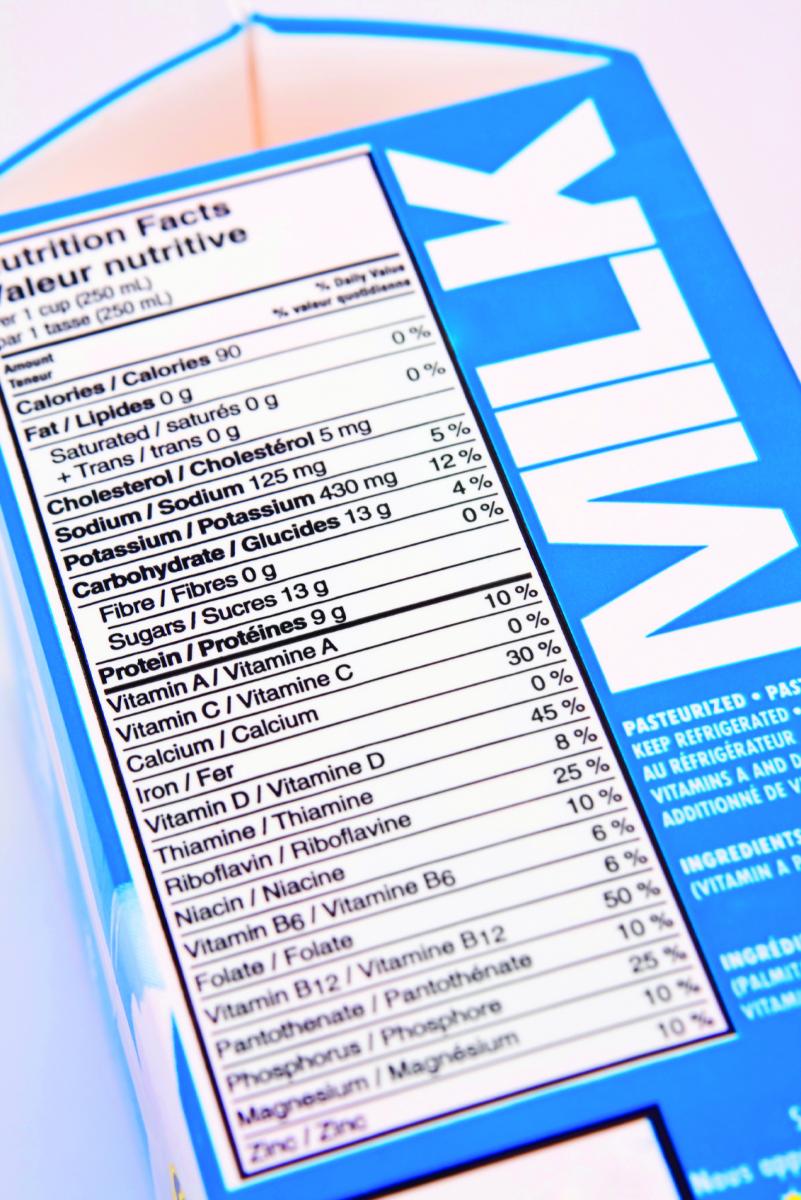A Questionable Codex
Codex Comission adopts reference values for 11 nutrients

In July, the Codex Alimentarius Commission (CAC) adopted Nutrient Reference Values (NRVs) for 11 nutrients to be included in the Codex “Guidelines on Nutrition Labeling,” published guidelines that require food products sold in its 213 member countries to state nutrient content on labels.
At its July meeting in Rome, the Commission, which is the highest decision-making body in Codex, adopted values for labeling the following nutrients: biotin (30 mcg); calcium (1,000 mg); folic acid (400 mcg); iodine (150 mcg); niacin (15 mg); pantothenic acid (5 mg); riboflavin (1.2 mg); thiamin (1.2 mg); vitamin B12 (2.4 mcg); vitamin B6 (1.3 mg); and vitamin K (60 mcg).
The Codex Committee on Nutrition and Foods for Special Dietary Uses (CCNFSDU) began the process of reviewing and updating Codex reference values back in 2004. NRVs “can be viewed as similar in some ways to the [U.S.] Recommended Dietary Allowances (RDAs),” says Jim Griffiths, PhD, vice president of scientific and international affairs for the Council for Responsible Nutrition (CRN; Washington DC).
The CCNFSDU developed these references by using a model called the “individual nutrient level at the 98th percentile (NL98),” says Griffiths-meaning that 100% of Codex NRVs are supposed to meet the nutrient needs of 98% of the worldwide population.
If a food or dietary supplement product contains at least 10% of a nutrient’s NRV per serving, the manufacturer can make a source nutrient content claim, says attorney Bethany Kennedy of Emord and Associates (Chandler, AZ). But there is a corollary: only nutrients that have established NRVs can be the subject of nutrient function claims.
In Codex, nutrient content claims are nutrition claims that describe the level of a nutrient contained in a food-for example, “High in fiber,” “Low in fat,” and a “Source of calcium.”
Codex nutrient function claims are nutrition claims that describe the physiological role nutrients play in growth, development, and normal functions of the body-for example, “Calcium aids in the development of strong bones and teeth”; “Protein helps build and repair body tissues”; “Iron is a factor in red blood cell formation”; “Vitamin E protects the fat in body tissues from oxidation”; and “Contains folic acid: folic acid contributes to the normal growth of the fetus.”
According to David Pineda Ereño, director of regulatory affairs for the International Alliance of Dietary Supplements/Food Supplement Associations (IADSA), the Codex NRVs are based on levels of nutrients associated with reduced risk of diet-related diseases.
That being said, however, Griffiths points out that Codex acknowledges that NRV values “should not lead consumers to believe that there is an exact quantitative knowledge of what individuals should eat in order to maintain health.”
Formulators will note that several of the NRVs are much lower than either levels recommended for most adults in the United States or levels typically included in dietary supplements sold in the United States. For example, the Codex Committee has set 1.3 mg for vitamin B6 while the United States recommends 10-25 mg. Another example is biotin, the NRV for which is set at 30 mcg, whereas most supplements sold in the U.S. provide 2.5 mg. Riboflavin’s NRV is 1.2 mg, while most supplements in the United States provide 20–25 mg. Thiamin is set at 1.2 mg, whereas most supplements sold in the United States. provide 20–25 mg as well.
“This is not the first time that NRVs are lower than expected,” says Kennedy, who points to the commission’s 2009 recommendations for lowering NRVs for several nutrients, including vitamin C, which it wanted to lower from 60 mg to 45 mg. At that time, Kennedy says, “Some countries and the National Health Federation opposed the reductions because they believed that consumers needed higher amounts for optimal health, and [the commission] decided to hold off for the time being.”
Despite the concerns, NRVs for 15 more nutrients are scheduled to be discussed at the next meeting of the CCNFSDU in
November 2013.
The Nutritional Outlook Podcast Episode 39: Nutritional Outlook's Ingredients to Watch in 2025
February 25th 2025In this episode, Nutritional Outlook interviews Scott Dicker, market insights director from market researcher SPINS, about ingredients and product categories nutraceutical and nutrition product manufacturers should watch in 2025.










